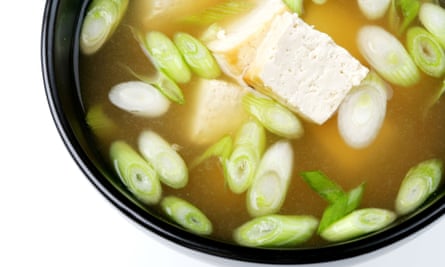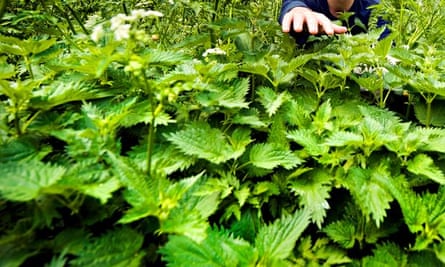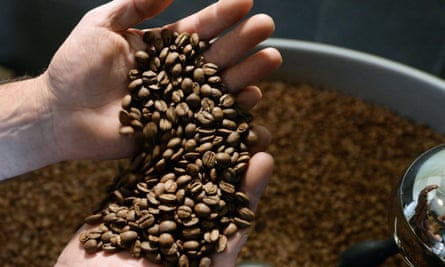Snail poo

During a snail plague in her garden that involved old paper boxes, Dutch designer Lieske Schreuder discovered that if snails eat coloured paper it dyes their poo.
From here, Schreuder bought hundreds of snails, built a laboratory and collected their bright-hued poo, using a machine she built to grind and mix it and turn it into flexible threads. It takes around five days for nine snails to produce the amount of poo necessary for one metre of thread.
The use of snail poo in fashion is probably limited to haute couture and limited further by the fact the material is temporary and will eventually biodegrade.
Schreuder assures anyone concerned that paper is of a similar cell structure cellulose to plants and trees and that no snails are harmed in the making of snail poo thread.
Tofu waste

Soy fabric is made from the by-product of soy foods such as tofu and soybean oil. The soy protein is liquefied and extruded into long, continuous fibres that are cut and processed like cotton. While soy fabric production helps reduce waste, only 2-3% of the world’s soy supply is certified (pdf) and the crop has links with poor labour conditions and deforestation in the Amazon.
Wolffish skin
Icelandic tannery, Atlantic Leather is taking perch, salmon, wolffish and cod skin, a by-product of the fisheries industry and turning it into leather for luxury fashion.
Biorubber
Outdoor clothing company Patagonia partnered with clean technology company Yulux to create a wetsuit less dependent on the synthetic, petroleum-derived material, neoprene. The resulting co-developed wetsuit which will be part of Patagonia’s Autumn/Winter 2014 collection, is 40% neoprene and 60% plant-based biorubber derived from the desert plant, guayule.
Patagonia is making the biorubber available to the rest of the surf industry in order to encourage volume up and force price down.
Abandoned sleeping bags

In 2011 the Association of Independent Festivals found that one in six tents were left behind at festivals. Some 12,000 tents were abandoned at the Isle of Wight festival in that year alone. Taking tents, tarpaulins and sleeping bags left behind at the the 2013 Secret Garden Party festival, design students at Nottingham Trent University turned festival waste into fashion.
Recreated cotton
The 2014 State of Sustainability Initiatives Review which charted the development of identity cotton initiatives, has estimated that by 2020 organic and standard compliant cotton could account for a quarter of global production.
Going even further, Swedish companies recently presented the world’s first garment made entirely from recycled cotton after Scientists at Stockholm’s Royal Institute of Technology developed a way of recreating the fibre.
Nettles

The use of nettles for fabric dates back to the Bronze Age in Denmark, where nettle fibres have been found in burial sites. In a four-year project funded by the UK government department Defra (Department for Environment, Food and Rural Affairs), Camira Fabrics and De Montfort University sought to make the common stinging nettle fashionable once again.
A perennial crop often considered a pest, nettles grow on land often unsuitable for other crops without the need for pesticides, herbicides or much water. The fibres in nettles are strong and elastic with in-built fire retardant properties and the linen-like material it can be spun into is naturally anti-bacterial and mould-resistant. Back in 2006, Dutch fashion label, Brennels started growing its own nettles in eastern Europe.
Coffee

Coffee is one of the world’s most widely traded tropical agricultural commodity. Since the early 1980s coffee consumption has increased by around 1.2% every year, rising to 2% more recently. In Japan, the world’s third largest importer of coffee, the taste for coffee has been even stronger at around an annual increase of 3.5%.
That’s lots of cups of coffee, and a lot of coffee waste. Taiwanese fabric manufacturer Singtex is adding coffee ground waste collected from coffee shops to cotton to create an odour eating, UV protective and fast drying fabric. Singtex claims the the textile is perfect for denim and outdoor wear like running and cycling gear.
More like this:
- Fashion meets renewable energy – clothes that charge your smartphone
- Seven fabrics inspired by nature: from the lotus leaf to butterflies and sharks
- Advertisement feature: H&M makes jeans from recycled cotton
The fashion hub is funded by H&M. All content is editorially independent except for pieces labelled advertisement feature. Find out more here.
Join the community of sustainability professionals and experts. Become a GSB member to get more stories like this direct to your inbox
Comments (…)
Sign in or create your Guardian account to join the discussion